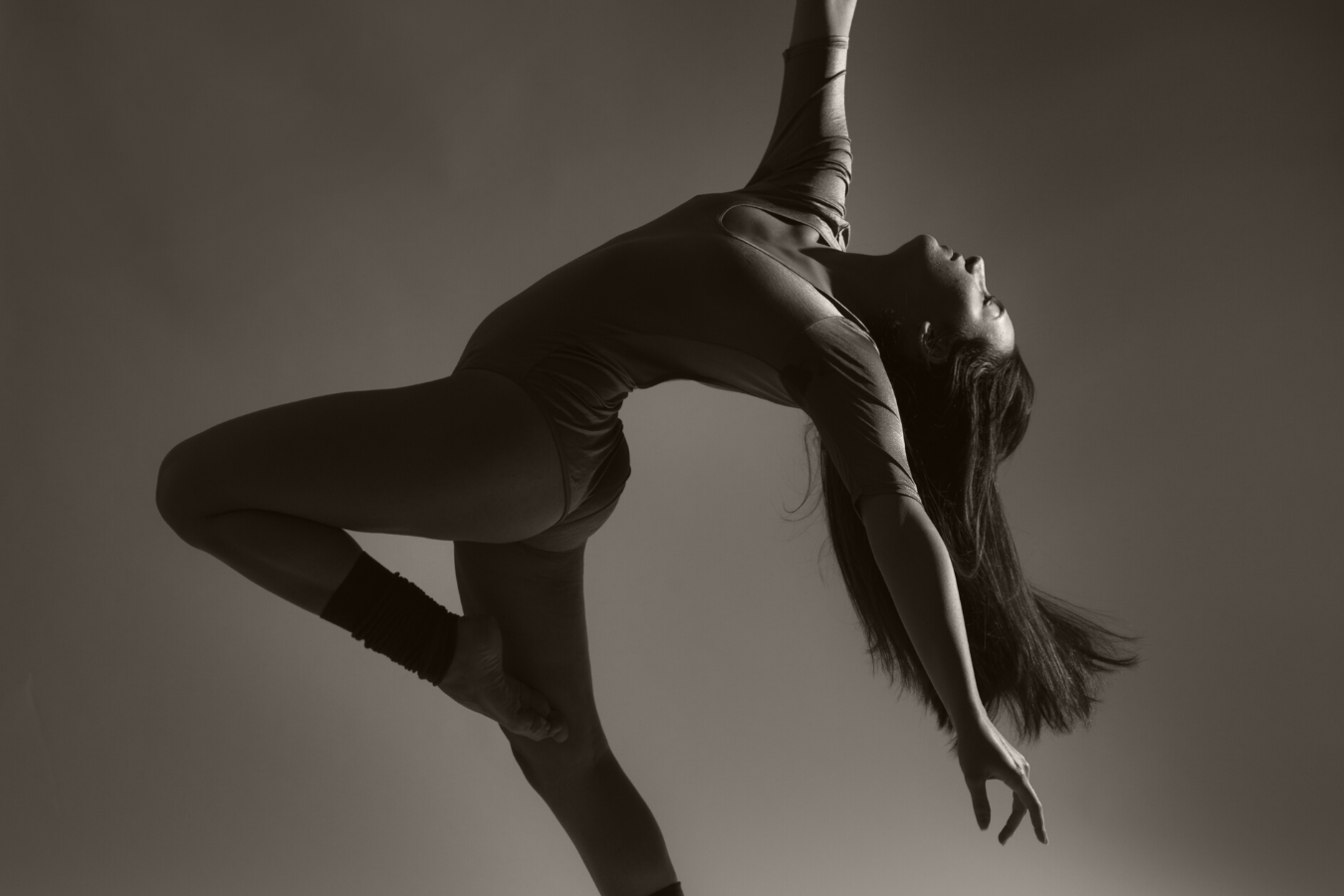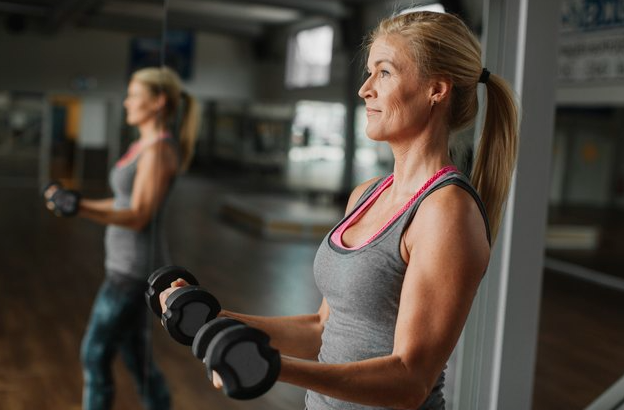Dancing is a graceful and demanding art form that requires not only artistry and passion but also a strong and conditioned body. To achieve peak performance and longevity in a dancer’s career, an effective strength and conditioning program is essential.
Regardless of the athlete/sport in question, strength and conditioning training typically has two primary aims: improving athletic performance and preventing injury. This article will cover both of these aims of strength and conditioning and how they specifically relate to dance.
Enhancing Performance Through Strength and Conditioning
Strength and conditioning training focuses on developing numerous physical attributes including muscular strength, power, flexibility, and endurance. These physical attributes are fundamental to excelling in sports, including dance. Here are some reasons why these attributes are important for dance and how they can be developed:
- Core Strength and Stability: A strong core forms the foundation of a dancer’s movements, providing stability, balance, and control. Core strengthening exercises such as dead bugs, pallof presses, back extensions, and plank variations are instrumental in developing core stability/strength, leading to better execution of complex dance routines.
- Mobility and Flexibility: Mobility and flexibility are crucial for a dancer’s ability to perform various movements with grace and ease. Incorporating dynamic and static stretches along with mobility exercises helps to increase joint range of motion, allowing dancers to achieve more challenging positions and movements with reduced risk of injury. Joint range of motion can also be improved through resistance training exercises such as Romanian deadlifts and pull-ups, however exercises must be taken through a full range of motion.
- Strength and Power: Strength and power work is essential for dancers to adequately prepare them for their performances, whether executing jumps, leaps, or lifts. For strength, focus should be primarily on compound movements such as squats, deadlifts, step-ups, overhead presses etc. Additional isolation exercises can also be included to target specific areas such as calf raises for improving ankle strength and stability. For power, exercises such as box jumps, lateral bounds, medicine ball throws, and kettlebell swings will transfer well to many dance movements.
- Endurance and Stamina: Long rehearsals and performances demand high levels of endurance and stamina. Incorporating cardiovascular exercises (running, cycling, swimming) or dance-specific interval training helps build endurance, reducing fatigue and improving performance during extended routines.
Example strength and conditioning session for dance:
| Order | Exercise | Sets x Reps | Rest Period |
| A1 | Barbell Box Squat | 4 x 5 | 2-3 mins |
| A2 | Box Jump | 4 x 3 | |
| A3 | Banded Dead Bug | 4 x 12 | |
| B1 | Single Leg Romanian Deadlift | 3 x 8 ES | 2 mins |
| B2 | Dumbbell Chest Supported Row | 3 x 10 | |
| C1 | Dumbbell Reverse Lunge | 3 x 10 ES | 1-2 mins |
| C2 | Half Kneeling Dumbbell Shoulder Press | 3 x 12 ES | |
| C3 | Seated Calf Raise | 3 x 12 | |
| Conditioning | Assault Bike | 5 x 10 Cals | 1 min |
Common Dance Injuries and How to Prevent Them
Injury prevention is a crucial aspect of a dancer’s training and performance routine. The repetitive and physically demanding nature of dance can put significant stress on the body, making dancers more susceptible to various injuries. Here are some common dance injuries and some possible solutions for treatment/prevention of these injuries.
| Common Sites of Injury | Possible Strategies for Prevention/Treatment | Example Exercises |
| Back | Core stability training, strengthening of the glutes, core and glute activation work prior to training | Dead bugs, back extensions, pallof presses, hip thrusts, hip abductions, monster walks |
| Shoulder/Arm | Rotator cuff strengthening and activation work prior to training, improving shoulder and thoracic spine mobility | Banded internal/external rotations, YTWs, scap push-ups/pull-ups, banded dislocations, cat cows, thoracic rotations |
| Hip | Strengthening of the adductors (groin), abductors (glutes), and hip flexors, hip mobility work | Copenhagen planks, groin squeezes, hip abductions, hip thrusts, banded marches |
| Knee | Strengthening of the quads, hamstrings, adductors, and muscles acting on the hips and ankles | Barbell squats, spanish squats, reverse nordics, romanian deadlifts, hamstring tantrums, copenhagen planks, calf raises, tibialis raises |
| Ankle/Foot | Strengthening and stretching of the muscles acting on the ankles, foot strengthening | Calf raises, tibialis raises, foot bridges, big toe flexion exercises |
Although certain injuries will require specific treatment and prevention methods, there are some general strategies which can be implemented to reduce risk of all injuries:
- Warm-up: A thorough warm-up is necessary before every session in order to increase blood flow, flexibility, and mobility to the working muscles and joints. Particular emphasis should be placed on warming up areas which are particularly tight/sore as well as sites of previous injury.
- Proper Technique: Work with qualified dance instructors to ensure you are using correct form and alignment during movements to avoid unnecessary strain on joints and muscles.
- Rest and Recovery: Allow adequate time for rest between intense dance sessions to prevent overtraining and promote recovery. Sleep is crucial for recovery so aim to prioritise 7-9 hours of high quality sleep each night.
- Injury Management: Address any minor discomfort or pain promptly. Seek advice from healthcare professionals or physical therapists if injuries persist.
- Proper Footwear: Always wear appropriate dance shoes that provide proper support and cushioning for your dance style.
- Balanced Nutrition: Maintain a balanced diet to support overall health and recovery from training and performances. Aim to consume carbohydrates prior to training to support performance, and ensure you consume plenty of protein to promote recovery.
- Gradual Progression: Gradually increase the intensity and difficulty of your dance training to allow your body time to adapt and to avoid injury.
Conclusion
Strength and conditioning training for dancers is not only about boosting performance but also ensuring longevity and injury-free careers. By implementing a well-structured strength and conditioning programme dancers can enhance their performance and push the boundaries of their physical capabilities. These programmes should focus on developing specific physical attributes for dance, incorporating the principle of progressive overload, and it should be tailored to the needs of the athlete. Moreover, by incorporating injury prevention strategies, dancers can safeguard themselves against common dance-related injuries, allowing them to perform for years to come.




